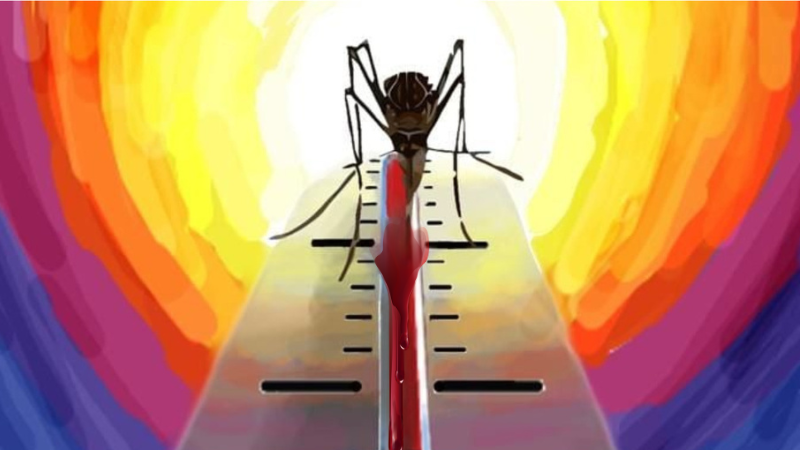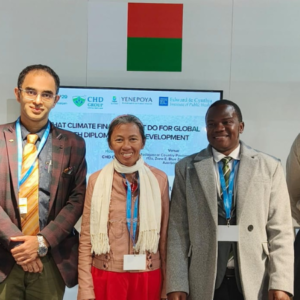Most people associate increasing sea levels and melting icebergs with climate change. While global warming and sea level rise are undoubtedly negative effects of climate change, other negative effects include larger and more frequent storms, droughts, wildfires, extreme flooding, and heat waves due to altered weather patterns. As a result, diseases like dengue that are susceptible to changes in climate have emerged and re-emerged. Dengue fever has been brought about by mosquitoes spreading far beyond their usual breeding sites as a result of warming temperatures and unusual rainfall. Several vector-borne illnesses are becoming more widespread geographically. Dengue fever is currently having a negative impact, and one of the main causes of this is climate change.
The increased environmental variables have an impact on the disease’s spread since the vector’s body temperature is dependent on the surrounding air, temperature, rainfall, and relative humidity and these are primary meteorological parameters associated with dengue transmission. Overall, models predict that new regions on the periphery of Aedes’s present geographic ranges will acquire environmental conditions conducive to the mosquito lifecycle.
Rainfall and ambient temperature are considered to be macro variables that influence dengue fever since they directly affect the density of the Aedes population, which varies seasonally depending on the acceleration of the spread of the disease. Primary Aedes mosquito vectors are spreading geographically as a result of these species’ constant growth in tropical or subtropical regions.
Elevated temperatures have the potential to impact mosquito reproduction by inducing egg hatching and hastening larval growth, ultimately reducing maturity time. Adult mosquitoes bite more frequently in warmer climates and facilitate the dengue virus’s faster spread to new hosts by enhancing its reproduction within the bodies of mosquitoes. Also, it affects the range of Aedes mosquitoes, allowing them to overwinter in more regions and expanding the range of higher elevations and latitudes. Warmer temperatures can extend the length of the season when mosquitoes are active, allowing a longer period for dengue transmission. High humidity increases the survival, feeding behaviors, and egg development of Aedes.
Since Aedes require shallow, stagnant pools of water to reproduce, excessive precipitation, storms, flooding, and rising sea levels can all contribute to a rise in the population of the insect.
Urbanization and deforestation can increase the risk of dengue by initiating contact with vector populations that had previously been more isolated from inhabited areas. Interruption of vector control programs during natural disasters can worsen dengue outbreaks.
According to a WHO brief on dengue fever published in March 2023, there are 390 million infections per year, of which 96 are symptomatic cases. Infections with dengue fever hit a record of 5.2 million worldwide in 2019. Additionally, it was predicted that 3.9 billion individuals are susceptible to infection, with 40% of the global population residing in dengue-prone areas. The illness is far more prevalent now than it was decades across the globe.
Due to climate change, a 2019 study by Jane P. Messina predicted that dengue will infect 60% of the world’s population by 2080, accounting for a 30-fold rise in incidence during the previous 50 years.
The Americas, Southeast Asia, and Western Pacific are areas most severely affected, with Asia bearing around 70% of the disease burden, according to the WHO fact sheet in 2023. There’s a good chance that the number of cases in non-endemic countries may increase in the coming years due to the shift in the epidemiological trend caused by climate change.
Climate change is the defining challenge of our generation, as people and nature worldwide are already feeling its effects. Avoiding the most devastating impacts of a warming planet demands a step change. Nevertheless, there are indications that a fundamental shift toward mitigating climate change is in place, despite the enormity of the challenge ahead. There is a need for governments around the world to implement their climate mitigation actions, as this is crucial in tackling the effects. Achieving a zero-mortality rate by 2030 will also require a comprehensive strategy with focused interventions to treat the disease.
REFERENCE
• Bhatt, S., Gething, P. W., Brady, O. J., Messina, J. P., Farlow, A. W., Moyes, C. L., Drake, J. M., Brownstein, J. S., Hoen, A. G., Sankoh, O., Myers, M. F., George, D. B., Jaenisch, T., Wint, G. R. W., Simmons, C. P., Scott, T. W., Farrar, J. J., & Hay, S. I. (2013). The global distribution and burden of dengue. Nature, 496(7446), Article 7446. https://doi.org/10.1038/nature12060
• Dengue and severe dengue. (n.d.). Retrieved 28 December 2023, from
https://www.who.int/news-room/fact-sheets/detail/dengue-and-severe-dengue
About the Author: Fatou W boye is MPH Scholar at Edward & Cynthia Institute of Public Health – Advanced Technical Cooperation Center with Yenepoya ( DU).
Disclaimer: Views expressed are the author’s own. Edward & Cynthia Institute of Public Health or Yenepoya (Deemed to be University) are not responsible for contents or opinions reflected in this article.




